Sommelier Liquidity AMA With Tor From Secret Network
Tor Bair, Founder, Secret Foundation, Creator of Secret Network and Zaki Manian, Sommelier Co-Founder, Discuss Insights into IBC and the Future of the Multi-Chain World.

Tor Bair, Founder of Secret Foundation, creator of the Secret Network, is particularly reassuring to liquidity providers in lean times as he helps LPs find options to maximize their yields. He explains how Secret Network is part of an increasingly multi-chain world that expands their opportunities as it enhances their privacy.
“Secret Network is positioned a little differently than a lot of the liquidity chains or other L1s out there -- the ones that are saying ‘we’re going to be for multi-chain liquidity,’ which has become a very hot narrative. Of course, Cosmos did it before it was cool. What brought us to the Cosmos ecosystem in the first place was the multi-chain vision. But for us what we try to bring to that multi-chain ecosystem is primarily programmable privacy -- so, the ability to make some things public when needed, some things private when needed on the chain -- which doesn’t exist by default in public blockchain ecosystems. That’s not how blockchains were originally built to function, but it does really limit their capabilities.
“So, where we’re experimenting -- not just in the DeFi space but everywhere in Web3 spaces is ‘what can we build if we bring this aspect of programmable privacy’ and one of the very first things that we launched was a bridge to the Ethereum ecosystem, knowing how much liquidity was in the Ethereum ecosystem, knowing how much DeFi experimentation was native to the Ethereum ecosystem.”
A bridge to Ethereum and cross-chain privacy liquidity
Tor describes Secret Network’s development:
“We constructed a bridge to Ethereum by which users could bring their ETH-based assets over to the Secret ecosystem and in the Secret ecosystem, they became Secret tokens, they are privacy-preserving versions of themselves from the ETH ecosystem. And, originally, we brought in LP interest and liquidity into our ecosystem via bridge mining.The idea was that you could provide single-sided liquidity on the bridge, no risk of impermanent loss, we just provide some short-term incentives for LPs to come over. Let’s say you’ve got some Ethereum lying around, you want some yield. Lock it in the bridge and what ended up happening was we were creating these anonymity pools across all of these different assets. So, it was almost what other projects might have called privacy mining, or anonymity mining. For us, it was a prelude to a much more complex liquidity ecosystem.
“SecretSwap is a cross-chain, front-running resistant DEX that we launched on Secret Network back in February it went on mainnet and at the time it was only supporting Eth assets that were bridged over as Secret tokens or any other Secret tokens that were native to Secret Network -- even the Secret token version of SCRT itself, which is the native coin of the network. And, you could start trading, you could start LPing. But we didn’t really see that take off until we launched the native governance token for SecretSwap, which is itself a Secret token, itself a privacy-preserving token on Secret Network that’s called SeFi, short for Secret Finance.
‘It went live at the end of March. And in the last three months we’ve seen LPs show up to provide liquidity for a bunch of different pairs on SecretSwap, primarily some like the largest pairs would be ETH vs WBTC, Secret ETH vs. Secret Secret, Secret Secret vs. USDT. Now, finally though, the most recent innovation is we’re finally realizing that multi-chain narrative we just launched [week of June 20th] our mainnet bridge to Binance Smart Chain. So, now people can also bridge in their BSC assets as Secret tokens. We support 20 different BSC assets. What this means is the most interesting pools right now -- and we’re going to probably see more of these -- are cross-chain minimized IL minimized anonymity mining pools. So you can have Secret ETH representing ETH from the ETH chain. You can have Secret ETH representing ETH from the Binance chain. They can sit in a pool against each other. You can be LPing for SeFi rewards by just having your ETH against ETH across chains. And what this is enabling is for people to effectively move their ETH across chains via Secret, while being able to also take advantage of the AMMs in our ecosystem and the other Secret apps that get built. So, we finally have realized our dream of not just cross-chain liquidity, but cross chain private liquidity. And, then we have a number of other bridges in development and on testnet.”
What’s driving demand for these types of pools?
“I’ll be honest, I did refresh CoinMarketCap in the last couple of weeks,” Tor says.” So, I’ll start by saying that I find DeFi capital to be extremely mercenary.”
“And, in bull markets when it’s just a yield hunt, people are very mercenary with their capital. They don’t necessarily care about sustainable yield,so much as they care about yield at any cost. And, in bear markets or those leaner times, what I’m finding is people do have a preference for these sort of IL- minimized pools in impermanent loss. ETH versus ETH across chains is an IL-risk minimized pool because in theory these things should just trade one to one with each other minus the fees from actually ‘arbiting it out’ across chains, but it’s the same reason you see stable Stablecoin Pools get so much adoption. But, those stablecoins are on the same network.
“We can also have, for example, Secret USDT from Binance trading against Secret USDT from ETH as a liquidity pool on Secret Network. That was actually the number one most requested pool after these initial reward pools went live. The three initial reward pools for BSC assets were the ones that were most heavily demanded, so that was the ETH ETH pool that I mentioned. But we also -- I believe the two that were ultimately selected were Secret versus BNB and Secret versus Wrapped Polka Dot, like the BEP version of Polka Dot itself and Dot.
“Now we have a separate bridge in development to the Polka Dot ecosystem but before that’s live there has already been a lot of demand for it. To be perfectly honest, there was also a lot of demand for a Ripple pool, for the BEP20 Ripple asset. That one didn't make the cut this time, but there’s all kinds of different demands from LPs in our ecosystem. I would say in the lean times people seem to be a little less aggressive in yield hunting. They want the least risky pools across all ecosystems, not just Cosmos but sort of everywhere in the downturns. And then, it’s a risk-on, risk-off microcosm of the macro environment. Right now it’s risk off, but we might be going back to a risk-on environment very shortly. It really depends how sentiment turns, it depends how bitcoin and ETH lead the market. I would say that that sentiment, even if it starts in the ETH ecosystem, goes everywhere. And that really benefits cross-chain liquidity ideals like what we’re trying to do, what Osmosis is trying to do, what Thor Chain is trying to do.”
Tor’s prediction after DeFi Summer
We had this big compression in yields, we had this extraction of capital. Now what? Tor predicts:
“This time, with this new DeFi Summer, I expect to see people really lean into these multi-chain opportunities, multi-chain yield, because yields were better and people just didn’t know. And we needed this kind of massive shock to make people reassess how they were providing liquidity across all these different chains. And when things got lean they decided to research cross-chain liquidity more because they were in a hunt for yield, even if the yields at the time didn’t turn out to be better. Now they are going to be aware that multi-chain LP is going to be a massive opportunity in the future and when liquidity rushes back in there’s nothing that says it has to rush into the places it used to be. It can absolutely go into the most innovative platforms and the places where they’re going to find the most yield. So, that’s my prediction that’s always been our justice but I definitely think that benefits the Cosmos vision overall.”
Zaki Manian, Sommelier Cofounder, adds his perspective:
“I think there’s a bunch of things that are subtle here. Essentially, what Tor is describing as providing liquidity over multiple trust paths can be a pretty nice yield-generating opportunity because it allows people to change what trust path that they’re on. That’s a service that they’re willing to pay for. We’ve been seeing on the Ethereum ecosystem where you have renBTC and Wrapped BTC, these are basically different trust paths.
“We are in DeFi Summer multi-chain edition, inter-chain edition. This is the theme of DeFi Summer. DeFi Summer 1.0 was all about ETH, DeFi Summer is all about L2s, Ethereum, Solana, Cosmos IBC, and more, and more, and more. And so this opportunity of trying to consolidate major trust paths -- essentially exchange across major trade routes, this is a big opportunity for being a liquidity provider because you don’t have the impermanent loss risk of essentially where you’re selling your best-performing asset for your worst-performing asset. This is an exciting asset of the emerging interchain and it’s fascinating to see this all come together.”
Zaki asks Tor: “From the point of view of something like Secret, something like Arbitron and Optimism are like the same thing. Are you thinking about them in similar ways?” Tor says:
“From our perspective, every chain ends up looking that way. And what we prioritize is TPL and the amount of value of assets secured across these chains. And we also have to take into account the velocity of the assets across these chains. It’s most interesting to work with the chains that not only secure a lot of different assets in large quantities, but like where people tend to use them as productive assets already. So, one of the chains that we’re exploring right now that we haven’t announced is on testnet and haven’t announced this is on mainnet but we had a team build in a hackathon was to Polygon. Obviously, because they’ve gotten Aave to move a lot of their activity there. So keeping an eye on how all of these things work. There’s nothing to day that all the bridges in our ecosystem need to have the same trust model. We have an independent development team that’s building a bridge to Monero, for example, and the demands for the trust model on a Monero bridge are different let’s say than a trust model that might be acceptable to users of Binance Smart Chain where they’ve got a fairlyy centralized validator model. What we care about is making sure that things can get into the Secret ecosystem so that they can have the same privacy benefits and guarantees as everything else. And then it’s also to just maximize the value and opportunities for that capital once it’s there and maximize the flexibility for users of secret network to be able to exchange those types of assets for each other or use them in other productive ways.”
What’s the Secret plan for AMMs in the Cosmos space such as Osmosis or the Gravity DEX?
Tor confesses that because he and the team have been so heads down on the Secret DeFi ecosystem he hasn't spent as much time as he would like getting hands-on with things like Osmosis, where by all accounts the launch was amazing.He says:
“There’s been a lot of community support, there are so many cool things about that model that I would love to learn from in terms of actual user engagement and acquisition. I think a very underrated metric in the crypto space is active users and a very overrated metric might be TVL in the short term as we’ve seen. Like, if we say that capital is mercenary and it’s controlled by three mercenaries, the larger the mercenary, the more mercenary it tends to be so I think that users and providing a delightful user experience and retaining them on the platform, either by providing amazing liquidity or an amazing actual trading experience, good yields, or just like good design. All of that matters to user acquisition and retention. And by all accounts what I’ve heard about a lot of these new AMMs in the Cosmos ecosystem is that they’ve done a phenomenal job on just that point. And I believe as we try to get users into the Cosmos ecosystem they’re discovering a lot of things that are going to provide unique and best-in-class user experiences. That’s super valuable.
“Beyond that, obviously the most important innovation that’s coming out of a lot of these things is all enabled by IBC, and IBC has been a huge priority for Secret Network in our ecosystem. It’s a little more complex for us having Cosmos and the contracts integrated, running with enclaves on the network, there’s some things that make it more challenging as an integration as opposed to just sort of like a trivial point. But, we're trying to move quickly to upgrades, like I know a lot of the other more complex chains are doing. I know Tara is trying to make the same upgrade, and hopefully when we have IBC integrated as well we’ll be able to take advantage of the awesome work that’s being done with these cross-chain AMMS in the Cosmos ecosystem by having Secret participating in these ecosystems as an asset. Like having Secret available on Osmosis. But, ideally, we’re also able to bring all these assets into our network as Secret versions of themselves.
‘And, the more types of assets all these different Cosmos chains end up supporting, I think it’s really interesting to do a lot of that liquidity provisioning in the Secret ecosystem where we can provide these cross-chain yields, but also this cross-chain privacy that comes from being able to easily transact across chains via SecretSwap or via any of the other AMMS that might launch in our ecosystem. It’s just a different model. I’m just really excited about the degree of experimentation in the Cosmos space right now and the amount of focus that’s been placed ultimately on the user experience because that, I think, is maybe an even larger differentiator than IBC.”
What is IBC?
Modern, fast-finality proof-of-stake blockchains can seamlessly exchange information with each other at the native protocol level, so it’s not relying on a smart contract, or a bridge or a relayer, it is a native incorporation of a light client for other blockchains that can pass messages in between blockchains and has been kind of the vision of Tendermint and Cosmos going back all the way to 2014 -- and, as of this week [June 30], finally realized.
The IBC cow paths have been established this week
Zaki chimes in on the growth of the IBC user experience::
“I’ve been pleasantly surprised, proud, and impressed at the IBC user experience that the Osmosis team has put together. It’s not perfect, there’s a lot of scope for improvement and the entire Cosmos community has to work together, but the Cosmos community has worked together pretty well. The Osmosis team has done all the heavy lifting, but they’ve also organized, invited, and got the collaboration of lots of other people in the Cosmos, from the teams writing relayers or running relayers, collaboration from all the chains that launched the initials, you know they’re helping the initial set of assets in bootstrapping liquidity. This whole thing has been like a Cosmos community gathering point.
“And the advantage of not going first is that a bunch of things about the IBC user experience that were not known last week are now firmly established. What is the process of establishing canonical channels on IBC is now a defined workflow, whereas last week it was speculatively ‘we should probably do it this way.’ The IBC cow paths have been established this week. It’s an exciting time to come on. I’ve always been a believer that basically every chain in the Cosmos will have a DEX. That a DEX is not a specialized function. There are things you can do that Osmosis has done and Secret is doing where you have built a lot of your crypto economics specifically around the DEX. It provides additional tokenomics around the decks; provides a lot of additional power.”
Tor agrees: “It’s just good sense because everything else on the network is enabled by having a lot of available liquidity for whatever application there would be.” You know, NFTs is something that’s being explored a lot across the ecosystem now. And, I know, in the Cosmos ecosystem as well via the Pylon teams and other teams, and where the liquidity is and where it can flow directs a lot of where people are going to create valuable assets. And if there are assets that represent real world value or real world assets or real world cash flows, you want those to exist. The liquidity is already present on chain, it’s just good sense. So having more DEXes, more AMMs, more liquidity is definitely a public good in the Cosmos ecosystem. Is it a differentiator? Longer term, no, but I think it is a need to have if you are going to have other successful applications that leverages whatever is unique about your chain, your ecosystem, or your integrations.
And, seeing this success for some of the very first IBC-enabled AMMs should give everybody in the Cosmos ecosystem confidence that this technical direction is valuable and, hopefully also sustainable. I should always include by financial disclosures, right? Present performance is not indicative of future performance, but I think that we’re definitely supposed to gain confidence from everything that we’ve seen today with IBC, an unbelievably Herculean technical task that by all accounts has been integrated seamlessly with products almost immediately with great success and few disruptions. And, whoever does it next will learn from everything that’s come before it and be even better.”
What does IBC mean for liquidity providers?
Zaki explains what IBC means for liquidity providers:
“There are more than a dozen assets built with the Cosmos SDK on mainnet. There are hundreds of assets coming. Up until now their only source of liquidity was getting centralized exchanges to list them or bridges like Secret bridge and now you have the emergence of IBC DEXes, like Osmosis, which is launching a very attractive liquidity mining campaign today and that any connected assets, and right now there are seven IBC connected assets, you can be a liquidity provider and you can farm those assets on Osmosis as of today [June 30]. Now liquidity providers have more blockchains that they can search and find yield from.
“This is the big thing of DeFi Summer 2.0 Inter-chain edition, yield is not just on one block chain, yield was on every blockchain.”
Tor observes:
“But, isn’t it amazing? You can go and be a liquidity provider on an Osmosis or a SecretSwap and then you can go into these blockchain-specific ecosystems and find even more yield. Once you start as an LP across two assets that you might previously had not held -- and these are productive assets in their own ecosystem, not only are you a productive LP on some of these cross-chain AMMs, but you’re going into these blockchain-specific DeFi universes or lending universes and you’re finding these other opportunities, so just by starting on these cross-chain AMMs you’re unlocking all of these different yield opportunities across all manners of different platforms on all of these different blockchains. Honestly, I think the only blocker to liquidity on the one hand is awareness of the opportunities and standing out in a DeFi space that’s really dominated by the ETH-focused newsletters where, at best, they’re discussing some of these L2 solutions but not some of these multi-chain opportunities. Or, the issue is just on-ramps, that’s it’s so easy to start with ETH and splinter from there, given all the on-ramps to ETH, but for a lot of these different Cosmos-based assets because it’s not as trivial of an integration for, say, a centralized exchange, we find it harder to see people getting their very first multi-chain asset. Which is why these inter-chain bridges to ETH and so on are so important. Do you think the blocker is more like liquidity on-ramps for multi-chain DeFi or do you think it’s just awareness of the opportunity or are they linked?”
Zaki adds: “You get a bunch of on-ramps. Adam can be an on-ramp, Eth and Stablecoins can each be on-ramps, Luna and the Terra ecosystem can be an on-ramp. You get a bunch of successful multi-chain on-ramps kind of living and breathing. Then, everything else over IBC, over bridges, can bootstrap off of that so you get this second-order effect.
“The other thing is, one of the reasons I think the multi-chain era of yield farming is so exciting is that yield farming is sustainable when what it is doing is like bootstrapping an institution.The farms that have their high APY moments and it’s basically a disappointment for whoever ends up holding bags are when you don’t get an institution. And, in many ways the institutions on ETH are somewhat built out right now. On the other hand, the institutions of the inter-chain and the multi-chain world are just getting started and so there’s going to be lots of opportunities for sustainable yield.”
Wondering if Secret SNIP-20 tokens be listed via exchanges? If so, would this lower privacy if implemented?
Tor says:
“Well, SNIP-20s as we call them are the equivalent to the ERC-20 standards so they’re like ERC-20s are on Ethereum, except for us, of course, they’re privacy by default tokens, meaning interactions with the token contractor encrypted, viewable only by the user who’s interacting with the contract. So, right now that’s what SecretSwap and all of Secret DeFi relies upon. That’s what you’re using. You’re using Secret tokens. If you’re a liquidity provider on SecretSwap, you have a Secret version of ETH. If you’re trading against a Secret version of USDT, something like that, that’s how the whole Secret ecosystem functions. So, any AMM in the Secret ecosystem, for example, is going to support SNIP-20s.
“This question gets really interesting for assets that are native to the Secret ecosystem.For example, Sienna, is a protocol that’s building in the Secret ecosystem. They’re building another Secret-based AMM and also a lending protocol on Secret Network.They have a native token on Secret Network, it is called Sienna. They also have a wrapped version of Sienna that lives on Ethereum as an ERC-20, and that token is available on at least one centralized exchange, likely soon to be two. So, that’s usually how exchanges will do integrations.They’ll integrate the Ethereum asset, you’ll then be able to trade for the Ethereum asset and then you can bridge it back to Secret Network to use it on mainnet or use it for governance purposes. For centralized exchanges to integrate privacy-preserving tokens, that’s probably a little bit of a headache for them but it’s also a little bit more of a headache for us if we’re trying to position for this privacy-first multi-chain world.
“The goal is not to have centralized exchanges list a bunch of Secret-native assets, the goal is to drive liquidity into the Secret ecosystem and have all of the value be in using those assets as productive assets in the Secret ecosystem. So, we don’t want to limit availability, meaning we would love for them to be listing their ERC-20 version -- or whatever other version on a centralized exchange -- but ultimately, they live on Secret Network and they derive all their value from the privacy-preserving properties that they keep on Secret Network. Once you deposit them as privacy tokens to an exchange, not only are you giving up custody on the exchange, you’re also giving up all of your privacy to the exchange. And, you’re giving up all of the utility of the token that you would be getting otherwise on the exchange. I hope that’s an answer to the question. It’s mostly me saying I would prefer to see these assets stay in the Secret ecosystem and be productive, but via bridges we can still have centralized exchange liquidity for Secret-based assets, and I think the future is assets that just sort of live on every blockchain anyway, we just want them to be productive in our world.”
How does Secret and Sommelier collaborate with Cellars?
Zaki says: “I don’t think we’ve figured out the answers to any of these questions yet, but there's definitely a role for privacy in Cellars that needs to be figured out. And so that seems like an area where collaboration could occur.
Secret alpha
At last, Tor drops some Secret alpha: If you like Cosmos based DeFi you might want to be watching our Twitter in like 20 minutes [June 30th].
More articles

Is Speculation Killing Crypto’s Future?

Sommelier's Path Forward: Embracing Revenue Over Narrative

Sommelier January Update
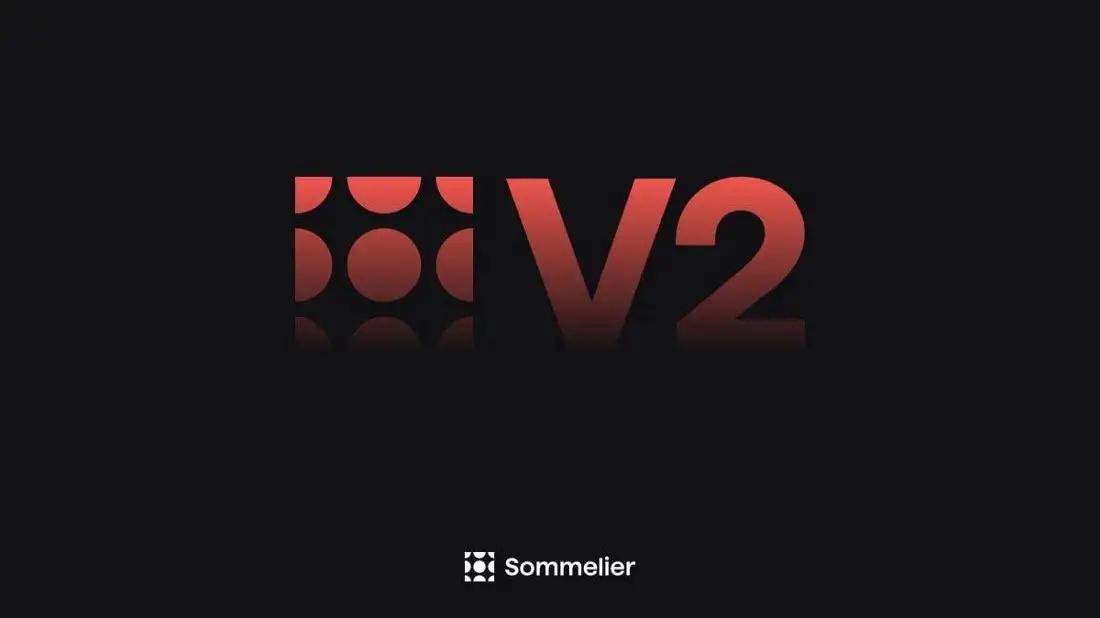
Sommelier Upgrades Cellar Architecture to Enable the Most Powerful DeFi Strategies in the Market

Real Yield USD is Coming to Maximize Stablecoin Yield

Retrospective on 2022 and the Journey Ahead

FAQ - Patache Digital’s Steady Strategies

Patache Digital: Risk Management Discussion

Strategy Deep Dive: Patache Digital

Strategy Provider Spotlight: Patache Digital

User Guide: How to Participate in Strategies on Sommelier

Sommelier Ambassador Program

Strategy Tokens: What Are They and How Do They Work?

6 Core Principles of Sommelier

10/10/22 - Deep Dive on Cleargate Backtesting

Strategy Provider Spotlight: Seven Seas

Deep Dive on Trend and Momentum Strategies

Strategy Provider Spotlight: ClearGate

Supporting Strategy Providers on Sommelier

Sommelier Protocol Team Weekly Update #11

ELI-5 Explanation of the Data Science behind Sommelier’s First Aave Cellar

Sommelier Protocol Team Weekly Update #10
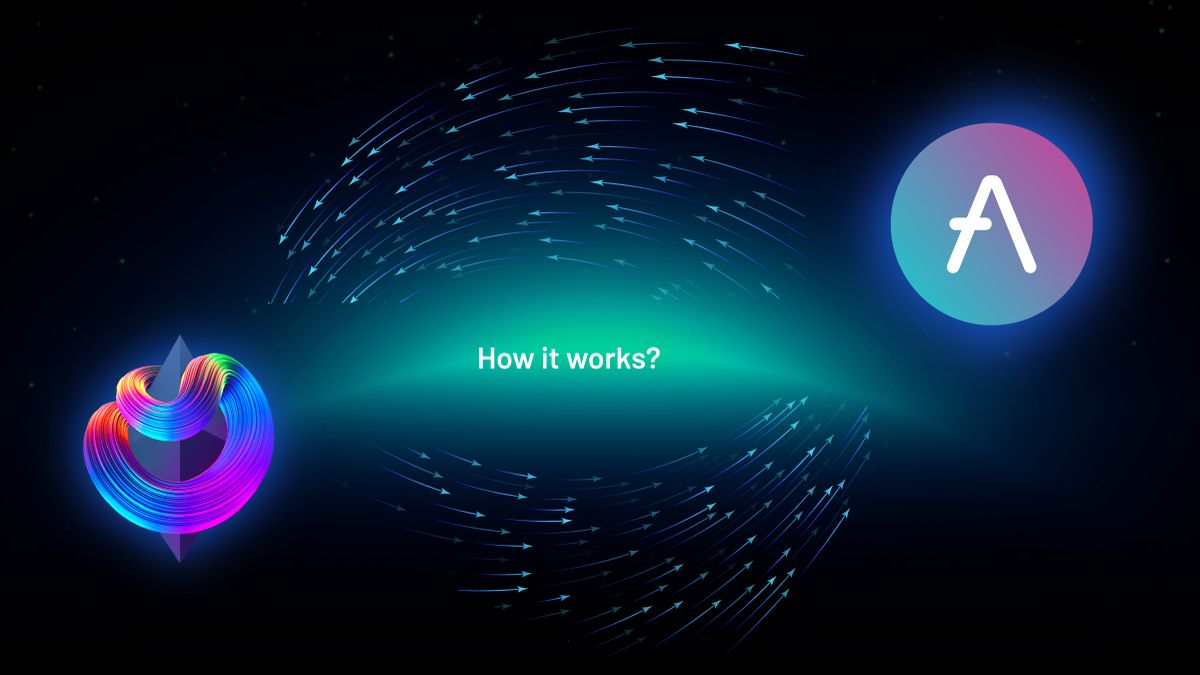
The Data Science Behind Sommelier’s First Aave Cellar
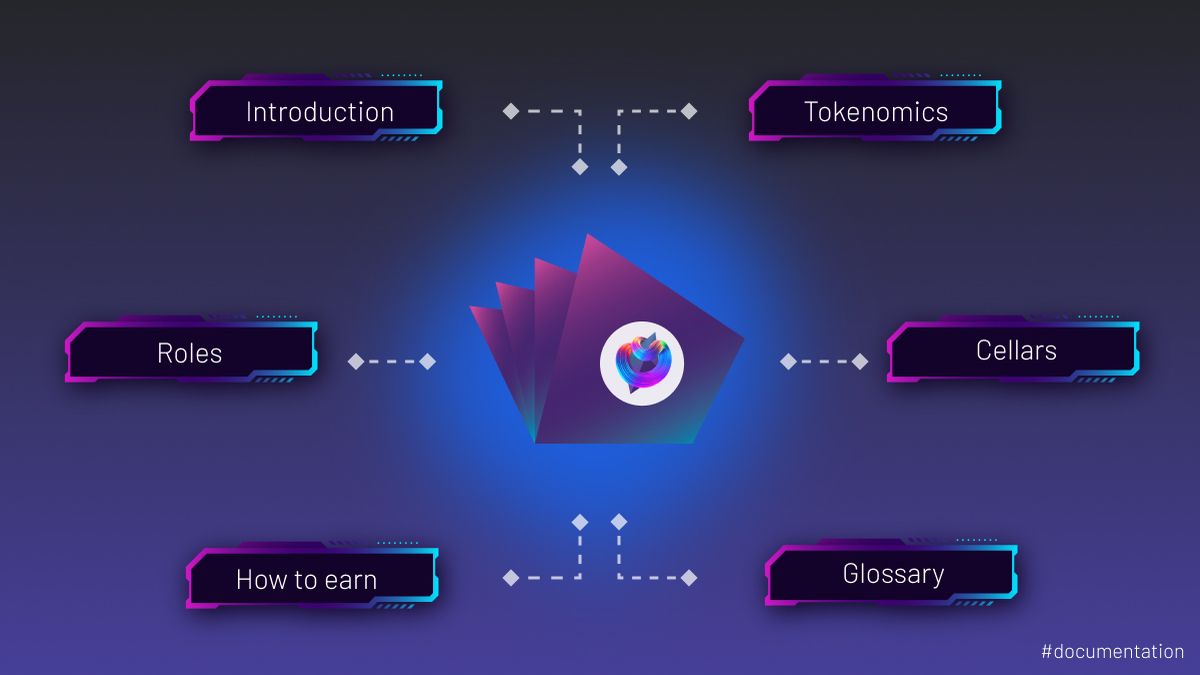
Sommelier Protocol Design Documents

Sommelier Protocol Team Weekly Update #9

Sommelier Protocol Team Weekly Update #8

Sommelier Protocol Team Weekly Update #7

Twitter Spaces With Sommelier: How to Launch a Cellar on Sommelier

Twitter Spaces With Sommelier: Protocol Upgrade and Community Update

Sommelier Protocol Team Weekly Update #4

Sommelier Protocol Team Weekly Update #6

Twitter Spaces With Sommelier: SOMM Airdrop Proposal Data Analysis

Twitter Spaces With Sommelier: Community Update on the First Cellars to Launch
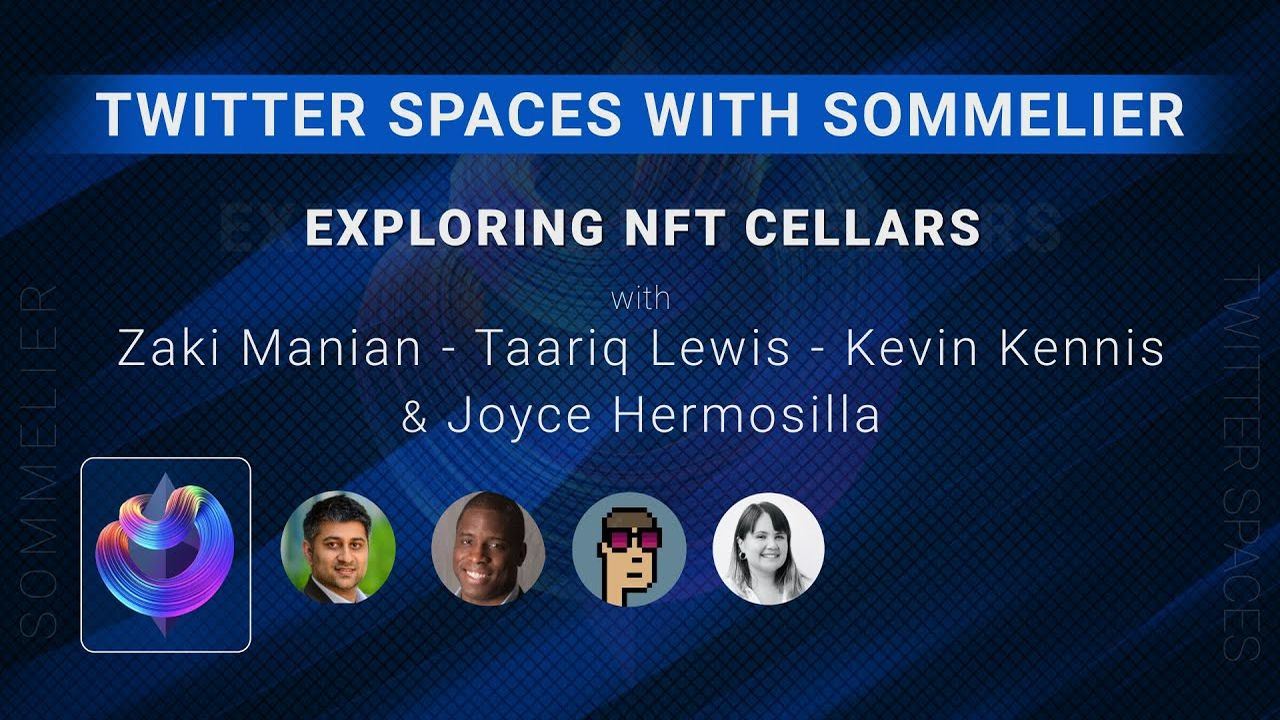
Twitter Spaces With Sommelier: Exploring NFT Cellars

Sommelier Protocol Team Weekly Update #1

Sommelier Protocol Team Weekly Update #2

Sommelier Protocol Team Weekly Update #3

Three Things You Need to Know About Sommelier Governance This Week

Sommelier On the Road: PROOF OF…REPUTATION
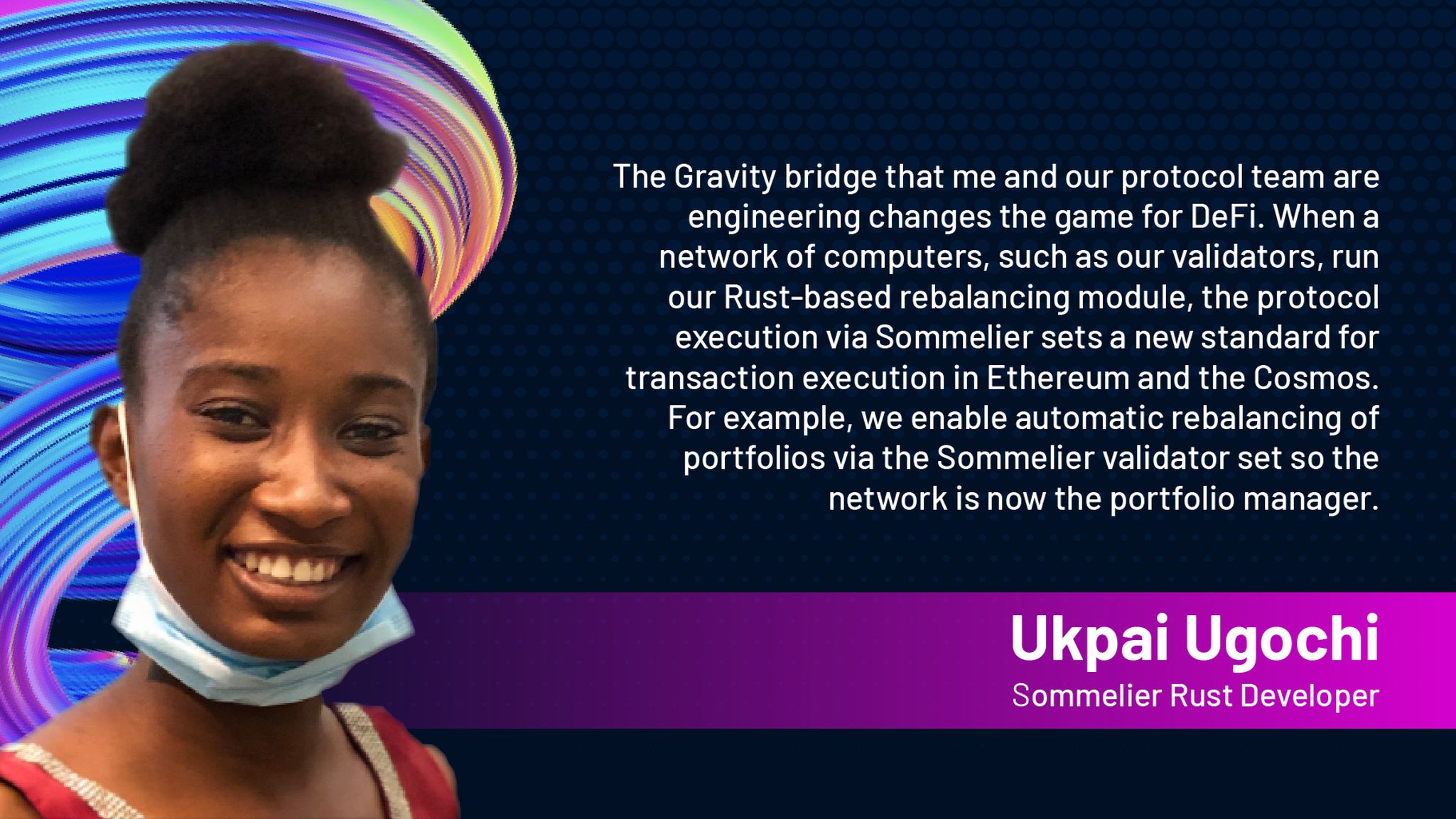
Introducing Ukpai Ugochi - Working on The Sommelier Cellars Rebalancer

Sommelier Announces 23MM Series A Mainnet Round to launch Automated DeFi via the Cosmos
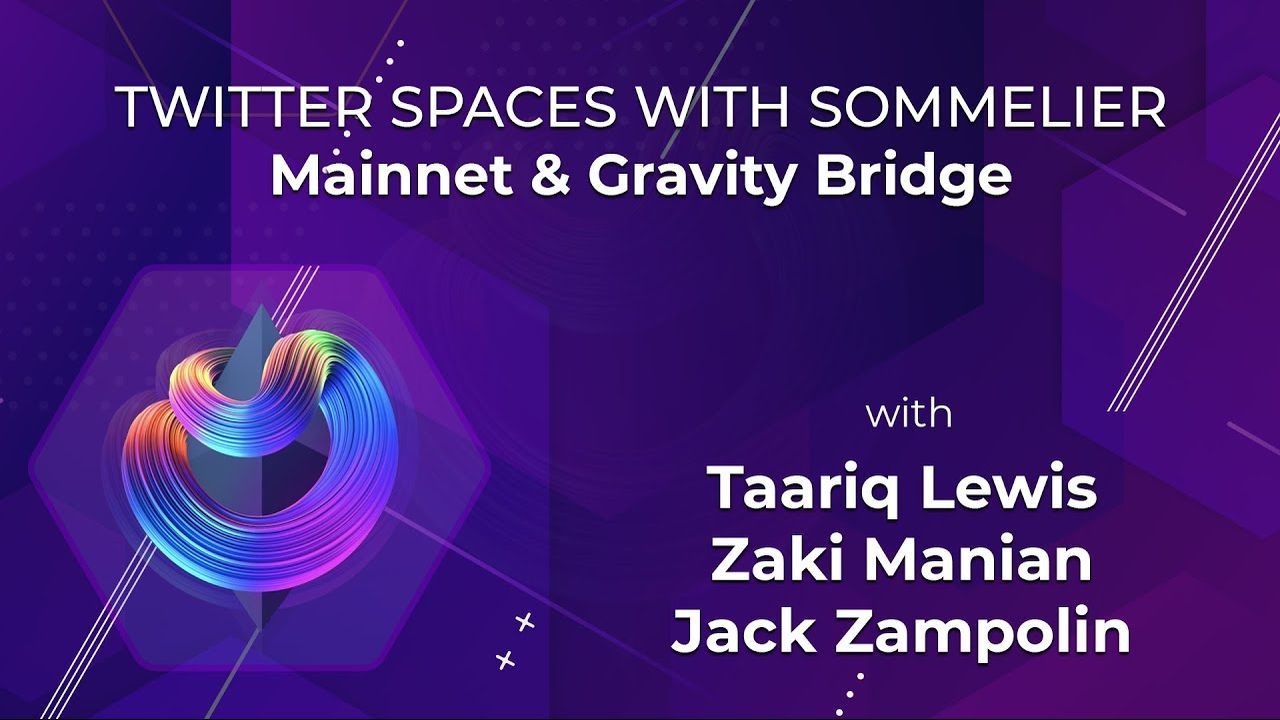
Twitter Spaces With Sommelier: Mainnet Launch & Gravity Bridge

Twitter Spaces With Sommelier: Introducing SOMM Tokenomics

Twitter Spaces With Sommelier: Mysten Labs AMA With Evan Cheng

Introducing SIPS and Sommelier’s Governance Structure

Twitter Spaces With Sommelier: End of Year AMA 2021

Twitter Spaces With Sommelier: Intro to SIPS & Lisbon Blockchain Week

Twitter Spaces With the Sommeliers: Mainnet Update and Governance Launch

Sommelier Partners With Mysten Labs to Make Sommelier and All Cosmos Blockchains the Fastest Protocols on the Planet

Twitter Spaces With the Sommeliers: Sushi AMA With Joseph Delong

Introducing the Sommelier Network Mainnet and Ethereum Gravity Bridge
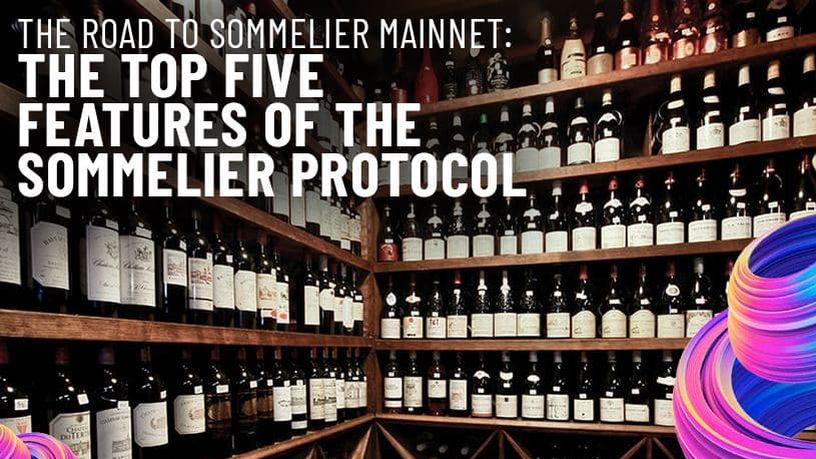
The Top Five Features of the Sommelier Protocol

Call for Validators: The Two Step Process for 2021

Two New Features Launched to Test Liquidity Management on Uniswap v3

Uniswap v3 Remove Smart Contract Incident Post Mortem for Sommelier

Call for Validators: Road to Sommelier Mainnet

Sommelier Liquidity AMA With Yenwen and Nick From Perpetual Protocol

Sommelier Liquidity AMA With Tascha Pan From Alpha Finance

Sommelier Liquidity AMA With Loi Luu From Kyber Network

Sommelier Liquidity AMA With Alex From Peanut

Sommelier Liquidity AMA With JP From THORChain

Sommelier Liquidity AMA With Alan Chiu From OMGX Network

Sommelier Liquidity AMA With Ari From Gelato Network

Sommelier Liquidity AMA With Sunny Aggarwal From Osmosis

A Fine Sommelier Explanation of Bollinger Bands With Kevin Kennis

Sommelier Liquidity AMA With Mona El Isa From Enzyme

Sommelier Liquidity AMA With Haxor From Method Finance

Sommelier Liquidity AMA With Tor From Secret Network

Liquidity Provider Insights With Zaki Manian - Ep. 7 - DeFi Automation Space on Uniswap v3 and Where Sommelier’s Heading

Sommelier Liquidity AMA With Geralt From CyberFi

A Pairings Tutorial of Two Sided Liquidity Addition with Sommelier

Liquidity Provider Insights with Zaki Manian - Ep. 6 - Liquidity Providers Need to Gear Up for a Multi-Chain World

Three New Summer Features for Liquidity Providers

Sommelier Liquidity AMA with Tom C and Max W from Charm

Sommelier Liquidity AMA with Dereek69 & Shalaquiana from BIOPset

Sommelier This Week - June 3rd 2021: The Road to Mainnet

Sommelier Liquidity AMA with Federico Landini from DefiLab

Sommelier Liquidity AMA with Michael Egorov from Curve

Liquidity Provider Insights with Zaki Manian - Ep. 5 - A Bright Light at the End of a Long, Tough Weekend for Bitcoin

Sommelier This Week - May 27th 2021: What Aspiring Sommelier Validators Need to Know on Last Week’s Protocol and App Progress

Liquidity Provider Insights with Zaki Manian (Special Edition) - Ep. 4 - New Pairings Release

Sommelier R&D AMA With Yaniv Tal From the Graph

Sommelier Liquidity AMA with MacLane Wilkison from NuCypher

The Eight Steps to Become a Liquidity Provider with Pairings

Sommelier NFT Awards - May 18th, 2021
Pairings By Sommelier: The FAQ

Zaki Manian Breaks Down What Liquidity Providers Need to Know Under Uniswap v3

Sommelier This Week - May 6th 2021: How This Week’s Protocol and App Progress Weaves Together to Make a Product

Sommelier Liquidity AMA with Dan Thomson from InsurAce

Sommelier This Week - April 29th 2021: Weeks Away From a Taste of the Sommelier App Experience and How the Dev Team Stays on Track
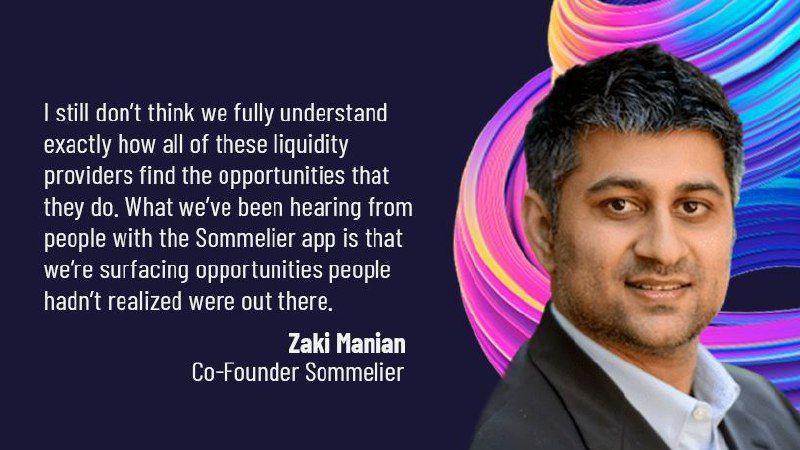
Zaki Manian Breaks Down a Phase Change Liquidity Providers Need to Know About Automated Market Makers

Introducing Jehan Tremback: Sommelier Core Developer and Althea Co-Founder that pushes the Limits of the Blockchain Bridge with Gravity

Sommelier This Week - April 22nd 2021: An Inside Look at Progress on Coordinating Sommelier Components That Contribute to the Chain

Sommelier This Week - April 15th 2021: Providing a Best-in-Class Experience for Uniswap Liquidity Providers

Sommelier Announces $1M R&D Grant from The Graph Foundation

Introducing LP Rewards: This Week With Cellframe

Introducing Deborah Simpier: Althea CEO and Sommelier Co-Founder Who Brought the Gravity Bridge to Life in The Cosmos

Sommelier This Week - April 8th 2021: What Uniswap v3 Means For Sommelier Architecture and Validators

Introducing Sommelier LP Rewards Program

Sommelier This Week - April 1st 2021: Gravity Bridge and Private Testnets

Blockchain startup decides to acquire a California winery and host NFT wine parties

Introducing Justin Kilpatrick: The Blockchain Bridge Wizard Who Maintains Gravity

Five Ways UniswapV3 changes the world for Liquidity Providers on the AMM
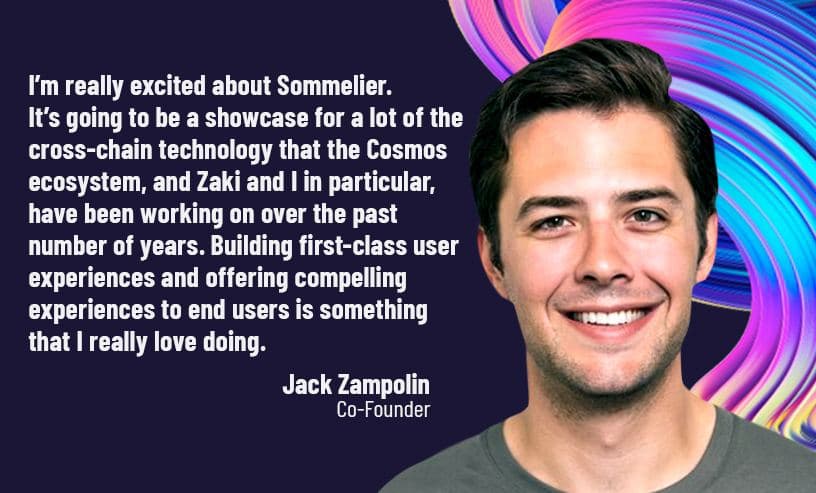
Introducing Jack Zampolin: On Becoming A Sommelier in The Cosmos
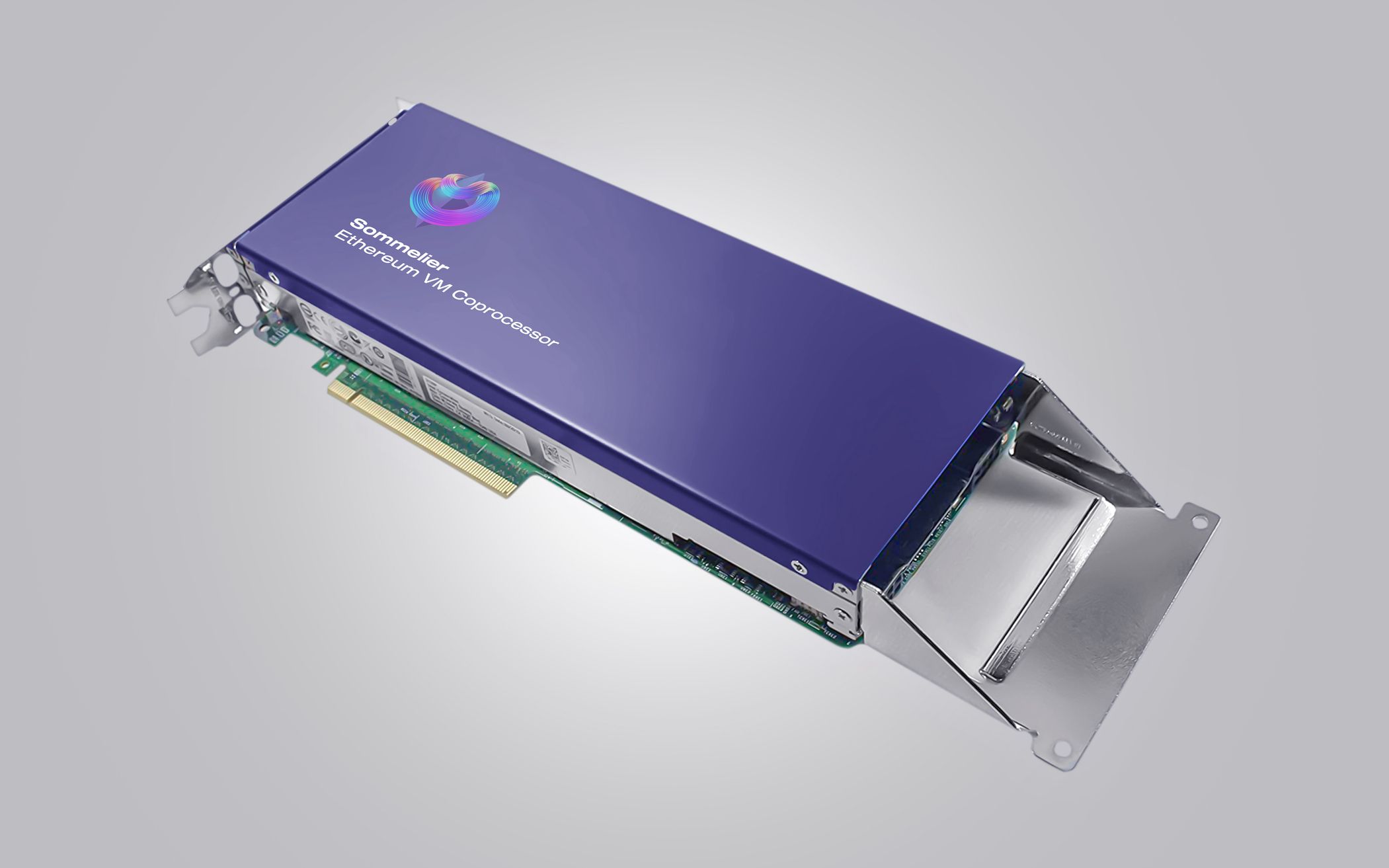
Sommelier: Welcome To The New CoProcessor For Ethereum
© 2025 Somm by Bajanss OÜ –Maakri 36-50, Tallinn, Estonia 10145